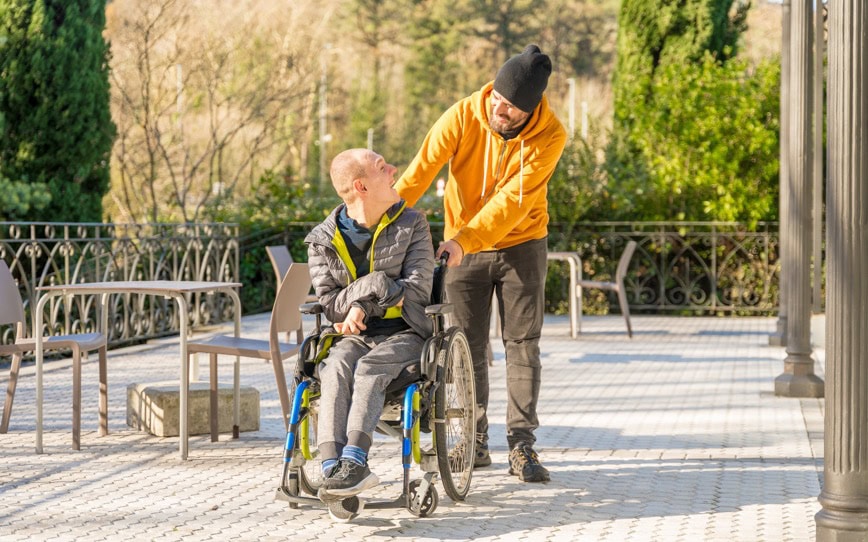A 30-Day Minimalist Experiment: Tips And Tricks For Success

Table of Contents
Embark on a transformative journey with a 30-day minimalist experiment! This guide provides practical tips and tricks to successfully declutter your life and embrace the minimalist lifestyle. Discover the benefits of intentional living and learn how to navigate the challenges of simplifying your belongings and your mindset. We’ll explore everything from planning your experiment to maintaining your progress long after the 30 days are over. Ready to simplify your life and experience the joy of less? Let's begin!
<h2>Planning Your 30-Day Minimalist Experiment</h2>
Before diving into the decluttering process, careful planning is crucial for a successful 30-day minimalist experiment. This phase sets the stage for a smooth and rewarding experience.
<h3>Setting Realistic Goals</h3>
Don't aim for complete minimalism overnight. Starting small and achievable is key to preventing overwhelm and maintaining motivation.
- Focus on one area: Instead of tackling your entire house at once, concentrate on a single area during the first week. For example, focus on your closet, kitchen drawers, or just one room. This allows for manageable progress and a sense of accomplishment.
- Set daily or weekly targets: Instead of vague goals, establish specific, measurable targets. For example, "declutter 10 items daily" or "empty one drawer per day."
- Track your progress: Use a journal, spreadsheet, or even a simple checklist to monitor your progress. Visualizing your accomplishments reinforces your commitment and helps you stay motivated.
<h3>Identifying Your "Why"</h3>
Understanding your motivation is paramount to the success of your minimalist journey. What are you hoping to achieve through this 30-day experiment?
- Define your reasons: Is it to reduce stress, save money, create more free time, or improve your mental clarity? Writing these reasons down creates a powerful reminder of your goals.
- Visualize success: Imagine the positive outcomes – a more organized home, reduced stress levels, increased free time, and a greater sense of peace. Hold onto this vision to stay focused.
- Write it down: Keep your "why" visible—write it on a sticky note and place it where you'll see it often. This serves as a constant reminder of your intentions and helps prevent wavering commitment.
<h3>Gathering Your Supplies</h3>
Proper preparation simplifies the decluttering process, making it more efficient and less stressful.
- Organize your containers: Gather boxes or bags labeled for donations, recycling, and trash. This keeps items separated and makes the disposal process streamlined.
- Create a temporary storage area: Designate a specific area for items you're unsure about discarding. This prevents clutter while you make decisions. Review this area periodically to avoid letting it become a new clutter zone.
- Know your donation/recycling options: Research local charities or recycling centers beforehand to ensure a smooth donation or disposal process once you've completed your decluttering.
<h2>Decluttering Strategies for a Successful Minimalist Experiment</h2>
Effective decluttering strategies are essential for a successful 30-day minimalist experiment. These techniques can help you make smart decisions about what to keep and what to let go of.
<h3>The 20/20 Rule</h3>
This simple rule can significantly accelerate your decluttering: Get rid of anything you haven't used in 20 months and that wouldn't cost $20 to replace.
- Systematic approach: Apply this rule to each area of your home, starting with the least sentimental items.
- Honest assessment: Be realistic about your usage patterns. If something hasn't been used in a significant amount of time, it's highly unlikely you'll need it in the future.
- Visual progress: Take "before" and "after" photos to track your achievements and stay motivated. Seeing the transformation can be incredibly rewarding.
<h3>The One-In-One-Out Rule</h3>
This prevents future accumulation by maintaining balance.
- Controlled inflow: For every new item you bring into your home, get rid of a similar item. This approach fosters mindful consumption.
- Maintaining control: This rule helps prevent future clutter and maintains the sense of order you've achieved.
- Long-term strategy: This is a strategy to maintain your minimalist lifestyle beyond the 30-day experiment.
<h3>The KonMari Method</h3>
The KonMari Method, developed by Marie Kondo, focuses on keeping only items that "spark joy."
- Categorical decluttering: Declutter by category (clothing, books, papers, komono, sentimental items) rather than by location. This allows for a thorough assessment of each item type.
- Emotional connection: Hold each item and assess whether it brings you joy. This focuses on the emotional value of items, rather than just their utility.
- Mindful process: Take your time with this method; it's about connecting with your belongings and making intentional decisions.
<h2>Maintaining Your Minimalist Lifestyle After the 30-Day Experiment</h2>
The 30-day experiment is just the beginning. Maintaining your progress requires conscious effort and the development of new habits.
<h3>Mindful Consumption</h3>
Conscious consumption is key to preventing a relapse into accumulating unnecessary items.
- Need vs. Want: Before purchasing anything, ask yourself if you truly need it or if it's merely a want. This distinction can significantly reduce impulsive purchases.
- Long-term value: Consider the item's long-term value and its impact on your life. Will it truly add value?
- Experiences over things: Shift your focus toward experiences and creating memories rather than accumulating material possessions.
<h3>Regular Decluttering</h3>
Schedule regular decluttering sessions to prevent the accumulation of new items.
- Consistent effort: Aim for a weekly or monthly clean-out, even if it's just for a short period.
- Habit formation: Make decluttering a habit, not a chore. Integrate it into your routine.
- Family involvement: Involve your family members in the decluttering process to encourage shared responsibility and a sense of teamwork.
<h3>Finding Support</h3>
Connecting with like-minded individuals provides motivation and accountability.
- Online communities: Join online forums or social media groups dedicated to minimalism. Sharing experiences and learning from others can be incredibly beneficial.
- Local meetups: Attend local minimalist meetups or workshops to connect with individuals in your area.
- Shared journey: Support and encouragement from others can help you stay committed to your minimalist journey.
<h2>Conclusion</h2>
A 30-day minimalist experiment is a powerful tool for simplifying your life and finding greater contentment. By following these tips and tricks, you can successfully declutter your space and cultivate a more mindful approach to your possessions. Remember, the key is to set realistic goals, develop effective strategies, and build sustainable habits. Start your own 30-day minimalist experiment today and experience the transformative power of intentional living. Embrace a simpler, more fulfilling life through mindful decluttering and embrace the journey toward a minimalist lifestyle!

Featured Posts
-
 Mlb Roll Call Chase Lee Pitches Scoreless Inning In Return May 12 2025
May 31, 2025
Mlb Roll Call Chase Lee Pitches Scoreless Inning In Return May 12 2025
May 31, 2025 -
 The Who On A Potential New Covid 19 Variant And Rising Case Numbers
May 31, 2025
The Who On A Potential New Covid 19 Variant And Rising Case Numbers
May 31, 2025 -
 Grigor Dimitrov 15 To Uchastie Na Rolan Garos
May 31, 2025
Grigor Dimitrov 15 To Uchastie Na Rolan Garos
May 31, 2025 -
 Canelo Alvarez Vs Gennady Golovkin Fight Time Complete Ppv Card Breakdown
May 31, 2025
Canelo Alvarez Vs Gennady Golovkin Fight Time Complete Ppv Card Breakdown
May 31, 2025 -
 Sanofi Aktie Gewinnt Fda Zulassung Fuer Rilzabrutinib Als Orphan Drug
May 31, 2025
Sanofi Aktie Gewinnt Fda Zulassung Fuer Rilzabrutinib Als Orphan Drug
May 31, 2025
